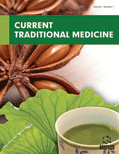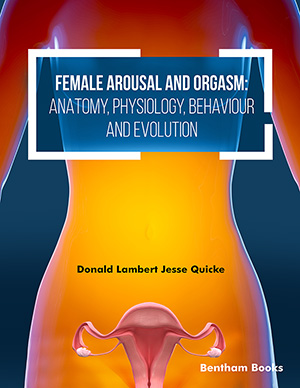Abstract
Background: Depression is a crippling mental disorder with high prevalence around the world. The available clinical antidepressants have been effective to a certain degree, and different side effects have limited their application. This leads to the necessity of finding new treatments. Herbal plants are a substantial source of new drug leads. Terpenoid compounds are secondary metabolites representing an enormous category of structures found commonly in plants either as aglycones or attached to sugar moieties. These phytochemicals have been extensively studied for their various biological effects, and several have been investigated for potential therapeutic effects in the treatment of depression.
Aim: This review aims to highlight the current knowledge on some terpenoids and triterpenoid saponins as potential antidepressant agents and their mechanisms of action, which may provide a better understanding of the potential antidepressant-like effects of these compounds and lead to the development of auspicious molecules with high efficiency and low side effects for depressive disorders treatment.
Methods: A total of 16 plants containing antidepressant agents are reviewed in this article. 9 terpenoids and 23 triterpenoid saponins compounds have been reported to becommonly found in plant extracts, indicating potential use for depression. To enhance the datum of this review, the mechanism of action for the candidate compounds has been predicted via functional enrichment analysis.
Results: The behavioural and neurochemical effects, as well as the possible mechanisms of action, have been evaluated in rodents by different predictive models of depression, mainly the acute stress models of the forced swimming test (FST) and tail suspension test (TST). The involved mechanisms include enhancing monoamine neurotransmitters, ameliorating brain-derived neurotrophic factor (BDNF), and normalizing the hypothalamus-pituitary-adrenal (HPA) axis. Preclinical studies support the potential antidepressant activities of some terpenoid compounds. Furthermore, the functional enrichment analysis has confirmed the previous pre-clinical findings and predicted further mechanisms of action, including cellular calcium ion homeostasis, cellular response to dopamine, endocrine resistance, and regulating GABAergic, serotonergic, glutamatergic, and dopaminergic synapse, bedsides neurotransmitter reuptake.
Conclusion: Terpenoids and triterpenoid saponins provide a large number of natural compounds. This review sheds light on terpenoids and triterpenoid saponins compounds with antidepressantlike activity and their potential mechanisms of action. However, more evaluations are required to confirm that these compounds are promising for discovering antidepressant drugs.
Keywords: Depression, terpenoids, triterpenoid saponins, herbal medicines, functional enrichment analysis, drugs.
[http://dx.doi.org/10.1016/j.jad.2011.12.036] [PMID: 22244375]
[http://dx.doi.org/10.1016/j.phrs.2020.105376] [PMID: 33316383]
[http://dx.doi.org/10.1177/2398212818799269] [PMID: 32166149]
[http://dx.doi.org/10.31887/DCNS.2008.10.3/shkennedy] [PMID: 18979940]
[http://dx.doi.org/10.1177/2045125312445469] [PMID: 23983973]
[http://dx.doi.org/10.1016/j.brainresbull.2018.12.015]
[http://dx.doi.org/10.1007/s12264-021-00638-3] [PMID: 33582959]
[http://dx.doi.org/10.1002/j.2051-5545.2010.tb00298.x] [PMID: 20975857]
[http://dx.doi.org/10.1016/j.bbr.2017.12.025] [PMID: 29284108]
[http://dx.doi.org/10.1155/2019/7943481] [PMID: 30719038]
[http://dx.doi.org/10.1038/tp.2015.137] [PMID: 26418277]
[http://dx.doi.org/10.3389/fpsyg.2021.641779] [PMID: 34421705]
[http://dx.doi.org/10.1176/appi.ajp.2020.20060845] [PMID: 32741287]
[http://dx.doi.org/10.1111/fcp.12186] [PMID: 26851117]
[http://dx.doi.org/10.1515/revneuro-2015-0009] [PMID: 26146123]
[http://dx.doi.org/10.1016/j.bbr.2008.06.030] [PMID: 18655806]
[http://dx.doi.org/10.1016/j.pnpbp.2010.04.025] [PMID: 20447436]
[http://dx.doi.org/10.1016/j.pbb.2009.10.007] [PMID: 19857512]
[http://dx.doi.org/10.1016/j.phymed.2009.02.008] [PMID: 19447013]
[http://dx.doi.org/10.1016/j.phymed.2010.08.011] [PMID: 20869223]
[http://dx.doi.org/10.1016/j.phymed.2006.12.015] [PMID: 17399971]
[http://dx.doi.org/10.1016/j.pbb.2006.07.027] [PMID: 16950504]
[http://dx.doi.org/10.1016/j.ejphar.2008.05.043] [PMID: 18585703]
[http://dx.doi.org/10.1016/j.ejphar.2010.06.043] [PMID: 20599906]
[http://dx.doi.org/10.1248/bpb.31.1109] [PMID: 18520040]
[http://dx.doi.org/10.1016/j.pnpbp.2009.03.001] [PMID: 19285110]
[http://dx.doi.org/10.2165/00003088-200645050-00002] [PMID: 16640452]
[http://dx.doi.org/10.1002/ptr.5025] [PMID: 23832433]
[http://dx.doi.org/10.1016/j.pnpbp.2006.11.010] [PMID: 17174460]
[http://dx.doi.org/10.2174/1381612825666190402105803] [PMID: 30947651]
[http://dx.doi.org/10.1016/bs.aambs.2020.11.001]
[http://dx.doi.org/10.1007/10_2014_288] [PMID: 25577395]
[http://dx.doi.org/10.1016/B978-0-12-802104-0.00011-1]
[http://dx.doi.org/10.1016/B978-0-444-64068-0.00004-8]
[http://dx.doi.org/10.3109/10409238.2014.953628] [PMID: 25286183]
[http://dx.doi.org/10.15406/jnmr.2019.07.00199]
[http://dx.doi.org/10.1007/s00709-019-01411-0] [PMID: 31297656]
[http://dx.doi.org/10.1007/s11101-010-9177-x]
[http://dx.doi.org/10.5127/pr.034713]
[http://dx.doi.org/10.3390/diagnostics11010123] [PMID: 33466814]
[http://dx.doi.org/10.1007/7854_2010_108] [PMID: 21225412]
[http://dx.doi.org/10.1111/cns.13622] [PMID: 33650178]
[http://dx.doi.org/10.1007/s00702-019-02084-y] [PMID: 31584111]
[http://dx.doi.org/10.1016/j.pnpbp.2017.04.008] [PMID: 28396255]
[http://dx.doi.org/10.1590/1516-4446-2013-1098] [PMID: 24271223]
[http://dx.doi.org/10.1093/nar/gkw1092] [PMID: 27899662]
[http://dx.doi.org/10.1038/srep21146] [PMID: 26879404]
[http://dx.doi.org/10.1093/nar/gkz382] [PMID: 31106366]
[http://dx.doi.org/10.1093/nar/gku1003] [PMID: 25352553]
[http://dx.doi.org/10.1111/j.1472-8206.2010.00850.x] [PMID: 20608992]
[http://dx.doi.org/10.1016/B978-0-12-815776-3.00027-9]
[http://dx.doi.org/10.1016/j.pbb.2012.08.016] [PMID: 22940588]
[http://dx.doi.org/10.3389/fphar.2018.01289] [PMID: 30483131]
[http://dx.doi.org/10.1016/j.phytochem.2011.12.022] [PMID: 22377690]
[http://dx.doi.org/10.1177/0269881114536789] [PMID: 24920136]
[http://dx.doi.org/10.1038/s41398-020-0789-7] [PMID: 32313032]
[http://dx.doi.org/10.1016/0024-3205(93)90220-W] [PMID: 8423710]
[http://dx.doi.org/10.1002/ptr.7077] [PMID: 33724593]
[http://dx.doi.org/10.1097/WNR.0000000000000747] [PMID: 28240721]
[http://dx.doi.org/10.1039/C7RA08041G]
[http://dx.doi.org/10.1016/j.intimp.2018.02.007]
[http://dx.doi.org/10.1007/s12576-017-0561-9] [PMID: 28744803]
[http://dx.doi.org/10.1016/j.neulet.2021.135994] [PMID: 34058291]
[http://dx.doi.org/10.5498/wjp.v8.i3.88] [PMID: 30254979]
[http://dx.doi.org/10.1007/s11101-019-09626-y]
[http://dx.doi.org/10.1016/bs.apha.2019.08.002]
[http://dx.doi.org/10.1007/s11356-021-12927-5] [PMID: 33666843]
[http://dx.doi.org/10.1016/j.bpsgos.2022.02.007]
[http://dx.doi.org/10.1016/bs.accb.2021.11.001]
[http://dx.doi.org/10.1016/B978-0-12-800128-8.00002-9]
[http://dx.doi.org/10.1002/ptr.6446] [PMID: 31353678]
[http://dx.doi.org/10.1016/j.pnpbp.2010.07.010] [PMID: 20647027]
[http://dx.doi.org/10.4103/0253-7613.19077]
[http://dx.doi.org/10.1016/j.pnpbp.2009.07.020] [PMID: 19632285]
[http://dx.doi.org/10.1016/j.phymed.2010.11.014] [PMID: 21273053]
[http://dx.doi.org/10.1016/j.seppur.2007.08.007]
[http://dx.doi.org/10.1007/s11101-017-9528-y] [PMID: 31736679]
[http://dx.doi.org/10.1016/j.biomag.2012.03.005]
[http://dx.doi.org/10.1016/j.pbb.2008.01.020] [PMID: 18325568]
[http://dx.doi.org/10.1016/j.brainresbull.2015.03.006] [PMID: 25857945]
[http://dx.doi.org/10.1021/np050439a] [PMID: 16643032]
[http://dx.doi.org/10.3389/fphar.2020.00617] [PMID: 32508631]
[http://dx.doi.org/10.1016/j.jep.2013.05.010] [PMID: 23702036]
[http://dx.doi.org/10.1078/0944-7113-00116] [PMID: 12046860]
[http://dx.doi.org/10.1021/np060470s] [PMID: 17343408]
[http://dx.doi.org/10.1248/cpb.54.595] [PMID: 16651751]
[http://dx.doi.org/10.1016/j.pbb.2009.11.003] [PMID: 19931301]
[http://dx.doi.org/10.1016/j.lfs.2006.02.015] [PMID: 16546221]
[http://dx.doi.org/10.1155/2016/6057650]
[http://dx.doi.org/10.1016/B978-0-08-102779-0.00004-6]
[http://dx.doi.org/10.2174/1389200211209050577] [PMID: 22292787]
[http://dx.doi.org/10.1021/jf402993a] [PMID: 24099303]
[http://dx.doi.org/10.1124/dmd.31.8.1065] [PMID: 12867496]
[http://dx.doi.org/10.1080/14786419.2014.942661] [PMID: 25075957]
[http://dx.doi.org/10.1155/2016/2906953] [PMID: 27822336]
[http://dx.doi.org/10.1111/nyas.13381] [PMID: 28662316]
[http://dx.doi.org/10.9790/3013-25202328]
[http://dx.doi.org/10.1016/j.foodchem.2020.127029] [PMID: 32450486]
[http://dx.doi.org/10.1016/j.fct.2017.07.019] [PMID: 28698154]
[http://dx.doi.org/10.1016/j.cofs.2018.02.003]
[http://dx.doi.org/10.1111/fcp.12232] [PMID: 27567103]
[http://dx.doi.org/10.1111/liv.13940] [PMID: 30079536]
[http://dx.doi.org/10.33263/BRIAC126.80818093]
[http://dx.doi.org/10.1021/acs.chemrestox.7b00070] [PMID: 28654752]






























